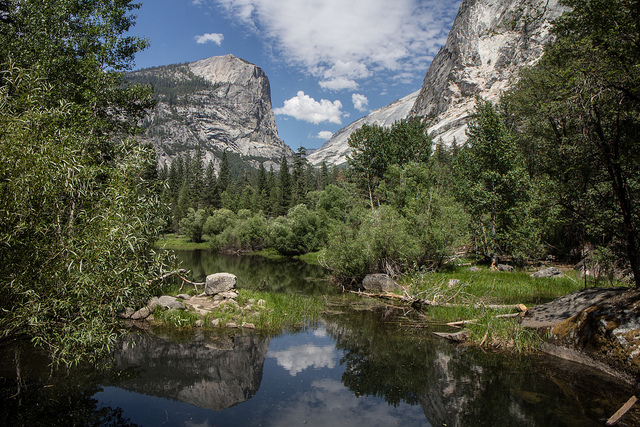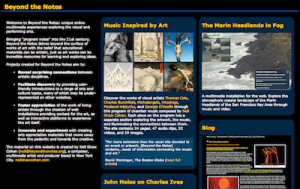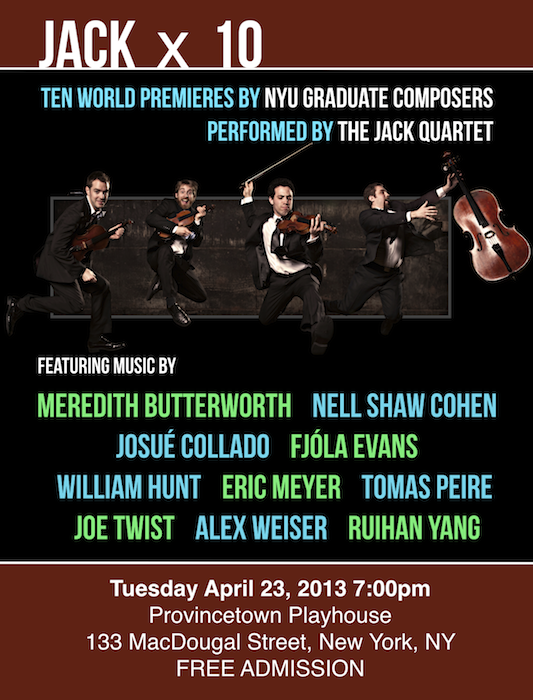Having visited the Giant Forest, Moro Rock and Crescent Meadow in Sequoia National Park, the third day of my John Muir-inspired pilgrimage into the Sierra Nevada brought me, finally, to Yosemite Valley.
My partner John and I were welcomed by the “Tunnel View” as we drove out of the tunnel that leads between Wawona and the Yosemite Valley. The famed granite domes of El Capitan, Half Dome, Cathedral Range and the Bridalveil Fall—gushing with delicate yet powerful streams of springtime snowmelt—greeted us in unreal majesty.
We continued into the valley and visited Yosemite’s Greatest Hits during the morning and afternoon. Numerous roadside pull-overs offered clear meadowed views of the aforementioned sights, and we followed short trails to Bridalveil Falls, Lower Yosemite Falls—the foot of which was home to John Muir’s cabin for two years–and Mirror Lake, where we were treated to a classic tree-framed view of Half Dome and Mount Watkins.
John Muir spent weeks on end exploring and contemplating this landscape in relative solitude. I saw some of what Muir saw and got a glimpse into his world, but I haven’t experienced it in the remarkable way that he was able to. Even in the middle of a weekday and early in the season, tourists crowded the roads, the viewpoints, and the free park shuttles that brought visitors between trailheads, campgrounds, and the Village (home to gifts shops and eateries). At about a mile wide, the valley floor itself is fairly intimate and traffic, buildings, and paved paths often felt omnipresent. A deeper communion with the landscape and the wildlife would necessitate moving away from the roads and tourists and getting up into the trails—and on this particular visit, I had neither the time nor the physical skill to take on many of the hikes leaving from the valley (such as the trails up to Upper Yosemite Falls or Glacier Point).
On our way out of the valley we took the moderately nerve-wracking drive to Glacier Point to view an astonishing panorama of the valley from above the height of Half Dome. Every landmark, small and large, was visible in the distance like miniatures on a movie set, including the camps and buildings on the Valley floor. The waterfalls moved slowly in the distance as we shivered in the cool high-altitude air and, wishing we could stay to watch the sunset but eager to make the long twisting drive to Wawona before nightfall, continued onward.
Read the next post in the series (Day 4)
Return to the On the Road to Capture John Muir’s Yosemite to view the other entries in this series.

 My forthcoming multimedia project Illuminating John Muir’s Yosemite through Music, Video and New Media was recently selected to receive the Undergraduate and Master’s Students Research/Creative Project Award through the Challenge Grant program at the NYU Steinhardt School of Culture, Education, and Human Development.
My forthcoming multimedia project Illuminating John Muir’s Yosemite through Music, Video and New Media was recently selected to receive the Undergraduate and Master’s Students Research/Creative Project Award through the Challenge Grant program at the NYU Steinhardt School of Culture, Education, and Human Development.


